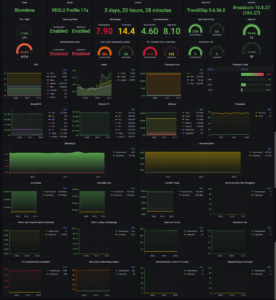Are you ready to elevate your Blogger site with stunning visual elements? Creating cards on a page in Blogger can transform the way your content is presented. Cards are not just attractive; they organize information neatly, making it more digestible for your audience. Whether you’re showcasing blog posts, products, or services, these compact boxes add flair and functionality to your layout.
Imagine each card as a mini-presentation of what you have to offer. They grab attention and invite readers to explore further. Not only do cards enhance user experience, but they also keep visitors engaged longer on your site. Ready to dive into the world of card creation? Let’s unlock the secrets together!
Understanding the importance of using cards for web design
Cards are a pivotal element in modern web design. They offer a compact way to present information, making it easier for users to digest content at a glance.
Each card acts as an independent module, perfect for showcasing articles, products, or images. This modularity improves the overall organization of your page and enhances user experience.
Additionally, cards promote visual hierarchy. By using distinct sizes and layouts, you guide visitors’ attention where it matters most.
Their versatility allows for seamless integration with various styles and themes across different platforms.
Using cards can also improve responsiveness on mobile devices. Users appreciate designs that adapt well to their screens without sacrificing functionality or aesthetics.
Incorporating this approach not only elevates your site’s design but also keeps visitors engaged longer as they navigate through clearly defined sections of content.
Step-by-step guide for creating cards in Blogger
Creating cards in Blogger is a straightforward process that can enhance your site’s visual appeal.
Start by accessing the Blogger dashboard. Choose the blog you want to work on, then navigate to the “Theme” section. Here, click on “Customize” to enter the theme designer.
Next, head over to “Advanced.” This is where you’ll add custom CSS for your card layout. Use basic CSS properties like `display: flex;` and `flex-wrap: wrap;` for a responsive design.
Then, create HTML elements within your posts or pages using `
` tags styled as cards. Add content such as titles, images, and descriptions inside these divs.
Don’t forget to preview your changes before publishing. Adjust margins and paddings until you’re satisfied with how each card looks across different devices.
Tips for choosing the right layout and design for your cards
Choosing the right layout for your cards can make a significant difference in how they are perceived. Start by considering the content you wish to showcase. Is it text-heavy, or do you have vibrant images? This will guide your design choices.
Next, think about alignment and spacing. A well-balanced card creates visual harmony. Keep margins consistent and ensure elements are evenly spaced to enhance readability.
Don’t shy away from experimenting with grid layouts; they provide structure while allowing creativity. Use columns or rows depending on how much information you’re presenting.
Remember that simplicity is key. Too many details can overwhelm viewers. Aim for a clean design that highlights essential elements without cluttering the space.”
Utilizing color, fonts, and images for eye-catching cards
Color plays a pivotal role in grabbing attention. Choose a palette that reflects your brand’s personality while also considering readability. Bright colors can energize, while softer tones may evoke calmness.
Fonts are equally important. Select typefaces that are not only stylish but also legible at various sizes. A mix of bold and italic styles can create visual interest without overwhelming the viewer.
Images should complement your cards rather than compete with them. Use high-quality visuals that resonate with your content and audience. Consistency is key, so stick to a specific style or theme for images throughout your cards.
White space shouldn’t be overlooked either; it provides breathing room around elements, enhancing overall aesthetics. By effectively combining color, fonts, and images, you can craft cards that stand out on any page in Blogger!
Adding interactive features to your cards
Interactive features can elevate your cards from simple visuals to dynamic elements that engage users. Consider adding hover effects that change the color or display additional information when visitors move their mouse over a card.
Another approach is incorporating clickable elements, like buttons or links, which encourage exploration and interaction. These could lead to deeper content related to the card’s subject matter.
Integrating social sharing options also enhances interactivity. By allowing readers to share content directly from your cards, you increase visibility and engagement across platforms.
Animations can add flair too. Subtle movements when a user scrolls down can draw attention without being distracting.
Utilizing forms for feedback or sign-ups within your cards creates an opportunity for direct communication with your audience, fostering deeper connections and enhancing user experience on your blog.
How to optimize your card layout for mobile devices
When optimizing your card layout for mobile devices, responsiveness is key. Start by using CSS media queries to adjust the size and arrangement of cards based on different screen widths.
Stacking cards vertically often works best on smaller screens, allowing users to scroll effortlessly through content. Ensure that touch targets are large enough for easy navigation; buttons should be at least 44 pixels high.
Maintain readability by choosing legible fonts and appropriate font sizes. Test how images scale down; they should retain their clarity even when resized.
Avoid cluttering your design with too much text or excessive visuals, as this can overwhelm mobile viewers. Prioritize essential content and ensure it fits comfortably within the confines of a small screen.
Always preview your layout in multiple devices before finalizing changes. This practice helps identify any issues early on and ensures an optimal user experience across all platforms.
Incorporating call-to-action buttons in your cards
Call-to-action (CTA) buttons can significantly enhance the effectiveness of your cards in Blogger. These buttons guide users toward taking specific actions, such as visiting a link or signing up for a newsletter.
When designing CTAs, clarity is key. Use concise and compelling text that tells visitors exactly what to do—like “Learn More” or “Join Us.” This helps eliminate any confusion about the next steps.
Placement matters too. Position your CTA button prominently within the card so it’s easily visible without overwhelming the design. Test various placements to see which yields better engagement.
Color choice can also influence click-through rates. Opt for colors that contrast with your card background yet align with your overall theme. This draws attention while maintaining aesthetic harmony.
Ensure that every CTA links directly to relevant content. A seamless experience keeps visitors engaged and encourages further interaction on your blog.
Best practices
When creating cards on a page in Blogger, adhering to best practices can significantly enhance your design and user experience. Start by maintaining consistency across all card designs. This includes using similar color schemes, font styles, and image sizes. Consistency helps establish a cohesive look that is easy for users to navigate.
Ensure your cards are responsive. With many users accessing content via mobile devices, your layout must adapt seamlessly to different screen sizes. Test how your cards appear on various devices before finalizing them.
Keep accessibility in mind as well. Use alt text for images and consider color contrasts that cater to those with visual impairments. A good rule of thumb is ensuring readability—text should be legible against its background.
Don’t overlook the importance of loading speed. Optimize images and limit the number of elements within each card so they load quickly without sacrificing quality or functionality.
By following these best practices, you’ll create visually appealing and functional cards that engage visitors effectively while showcasing what you have to offer on your Blogger site.




